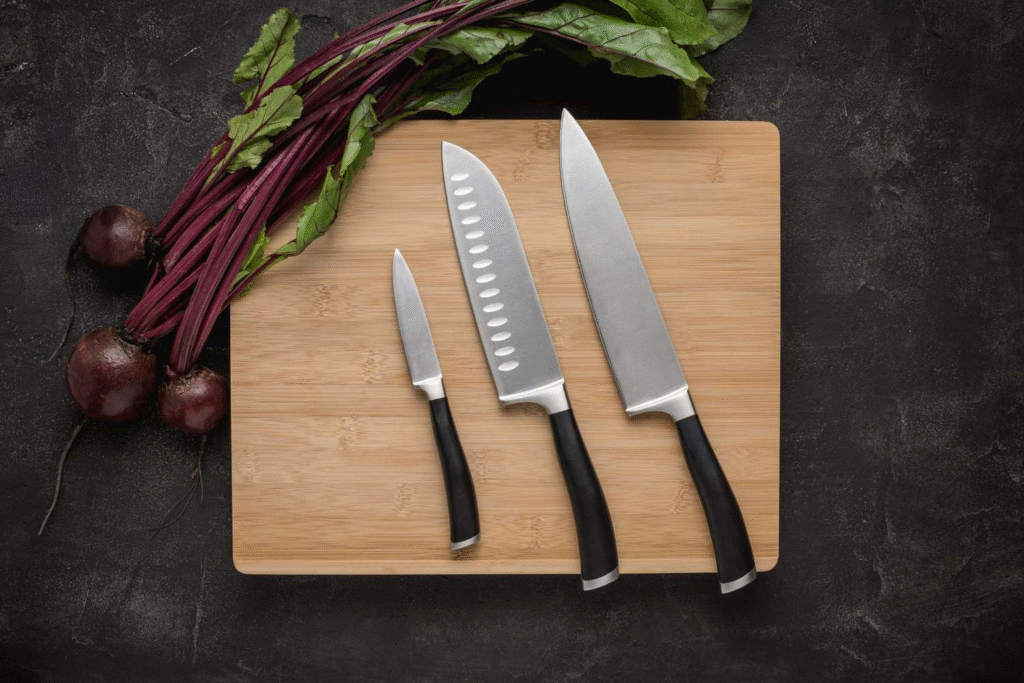How to Store Your Kitchen Knives Safely

Proper knife storage is essential for keeping your kitchen tools in good shape. A sharp knife can quickly become damaged if not stored correctly. Many people leave knives loose in drawers which causes dullness and even accidents. Organizing your blades the right way can protect both your hands and your investment. Safety should always come first especially in a busy kitchen. Blades like german knives need extra care due to their fine steel and sharp edges. Smart storage also keeps your tools clean and easy to reach. By building safe habits now you can enjoy long-lasting kitchen performance every day.
Magnetic Knife Strips for Modern Kitchens
Magnetic knife holders are great for saving space and keeping your tools visible. These strips mount easily on walls and hold knives in place with strong magnets. It’s important to install them properly to avoid slips. A damascus knife benefits from this style because it avoids dulling from drawer contact. Always place the blade flat against the magnet to avoid scratches. This method also keeps counters clear and adds a modern touch to the kitchen. Make sure the magnetic strip is clean and strong enough for your knives. Proper use can make this a safe and stylish storage solution.
Traditional and Effective Knife Blocks
Knife blocks are one of the most popular storage options. They keep knives upright and easy to access while protecting the edges from damage. Wooden blocks are durable and look attractive on the counter. Be sure to clean inside the slots regularly to avoid bacteria build-up. For users of german knives, knife blocks are especially useful since they hold heavier blades securely. The slots prevent knocking or friction between blades which helps them stay sharp longer. This method is simple but effective. A quality block keeps your knives organized safe and ready for everyday use without risking their condition.
Drawer Inserts for Hidden Storage
If you prefer to keep knives out of sight drawer inserts are a great option. These wooden or plastic trays fit inside kitchen drawers and have grooves to keep each blade in place. This prevents contact between knives which helps them last longer. Inserts are excellent for organizing many tools including a cleaver knife that may not fit in traditional blocks. Always ensure the drawer is dry to avoid rust. This method keeps your tools clean safe and tucked away. It’s ideal for households with limited counter space or young children who need knives kept out of reach.
Proper Storage for German Blades
Premium knives need more than just a spot in the drawer. They need intentional storage that maintains edge quality and prevents damage. German knives are often heavier and thicker so they require solid support. Choose methods like blocks or magnetic strips to protect the blade surface. Avoid tossing them into drawers without covers. When stored well these knives stay sharper and safer for longer use. It’s also helpful to clean and dry your knife before putting it away. Organized storage saves time during cooking and adds a layer of safety to your kitchen routine every day.
Protecting Patterned Steel Blades
Unique knives with layered steel require special attention during storage. A damascus knife set should always be stored in individual slots or blade guards to prevent scratching. The decorative layers on these knives are delicate and can be damaged if left rubbing against other utensils. Keep them separate from regular tools to maintain their appearance. Choose padded blade protectors or custom-fit blocks for added care. These knives deserve better storage than a cluttered drawer. Preserving their pattern means maintaining both form and function. Quality knives stay beautiful and functional longer when stored in the proper way every single time.
Travel and Outdoor Knife Storage
Sometimes kitchen tools need to be moved for outdoor events or cooking classes. In such cases safe transport is key. Blade guards and carrying rolls are great solutions for moving your knives securely. Each pocket holds a single knife and prevents them from knocking into each other. If you’re packing a nakiri knife, make sure its square blade is completely covered. Padded bags also protect users from accidental cuts while reaching for tools. Never travel with loose blades in a box or pouch. Proper travel storage ensures safety sharpness and convenience wherever your cooking takes you.
Final Thoughts on Safe Knife Storage
Safe knife storage is about more than just tidiness. It keeps your blades sharp your hands safe and your tools long-lasting. Whether you’re storing german knives in a block or displaying a damascus steel knife on a magnetic strip the right method makes a big difference. Avoid drawers without organization and never leave blades exposed. Store each knife dry clean and separate from others when possible. Use blocks strips guards or trays depending on your kitchen needs. Small changes in storage lead to big improvements in safety and performance. A well-kept knife is always a better knife.
